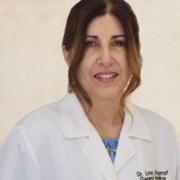While you might think there isn’t much overlap between the goals of a family medicine physician and a pediatric dentist, we have a shared understanding about the harmful effects of sugar-sweetened beverages (SSB) on the health of young children. We have both witnessed first-hand the increase in SSB-related poor health outcomes, especially during the COVID-19 pandemic. Our patients consumed higher than usual SSBs that coupled with experiencing a lack of access to physical activity, not surprisingly, increased the cases of obesity and/or dental caries in our practices.
When looking at BMI among San Diego school children, nearly 1 out of every 3 children were overweight or obese in the 2017-18 school year.1 In terms of their oral health, according to data from the Oral Health Assessment 2017-18, 27% of kindergartners and first graders already experienced tooth decay or restorations, and 21% had visible decay with 4% needing urgent dental services.2 These numbers were pre-pandemic and already shocking. Here are our personal experiences treating patients during the pandemic:...
It’s hard for me to believe that I have now been practicing medicine for twenty years. Every day has been a gift …It has been and continues to be an honor to be a part of my patients’ lives.
I serve patients in a community health center in Redwood City, where many struggle to manage their chronic diseases in the face of financial insecurity that often requires them to work multiple low-paying jobs. As their primary care provider, I thought my role was to educate and partner with my patients on their continued journey of well-being. I would draw simple diagrams explaining what high blood pressure and high blood sugar can do to the body. It took me nearly two decades of practicing medicine before I realized that many of my patients lacked access to the very foods I was advising them to eat.
During the Covid-19 pandemic, our clinic decided to screen everyone for food insecurity. We found that close to 20 percent of patients who came through our doors worried about having enough food to eat. When we delved deeper, we found that even more did not have access to the nutritious foods that we often instructed them to eat. I’ll never forget when my patient, whom I had known for 8 years, told me that he felt ashamed to admit that he did not have enough food for himself and his family. I was disappointed that I did not think to ask and understand what his circumstances were. I missed what was right in front of me. Despite having the theoretical understanding that nutrition is so foundational to health and wellness, I was not doing enough to identify and address one of the root causes of chronic disease that many of my patients faced. I became passionate about finding strategies to address food...
I spent several years working as a family medicine physician in Los Angeles. Many of my patients were Spanish-speaking and low-income individuals, a large portion of whom suffered from obesity, diabetes, and other chronic conditions. I found that simply advising patients to “eat a healthy diet and exercise” did not lead to improved health measures. By embracing a holistic approach, I was able to find the root cause of my patients’ health problems. Many of my patients lived in neighborhoods without a nearby grocery store to buy fresh fruit and vegetables and did not understand how to read nutrition labels. Over a series of clinic appointments, I would work closely with my patients to find ways to address barriers to healthy eating and exercise. My clinical experiences inspired me to go beyond the clinic walls to find ways to address the social determinants of health that were contributing to my patients’ poor health outcomes.
When the COVID-19 pandemic began in 2020, I made the decision to move to my hometown area in Central California. As a public health trained physician, I wanted to give back to the region where I was raised and assist with local programs aimed at mitigating the impact of COVID-19 on vulnerable communities. I began working with the Fresno County Department of Public Health (FCDPH) and helped coordinate the department’s efforts to protect farmworkers against COVID-19 by making COVID-19 tests and vaccines more accessible in the rural areas of the county. As the daughter of Mexican immigrant farmworkers, I know firsthand the challenges that many farmworkers face when accessing health care. My parents were monolingual Spanish speakers and due to their language barrier, they had...
Kaleah was a cheery 11-year-old who loved spending time with her family, but when I first met her in the clinic during her annual check-up, she was depressed and suffering from childhood obesity.
I learned that Kaleah’s 17-year-old brother, who she idolized, and was a standout player on his high school baseball team, had recently suffered a stroke. He was in therapy relearning how to walk and talk. When the doctors explained to Kaleah and her parents that the stroke was probably connected to her brother’s diet and weight, Kaleah became doubly concerned.
At home there always seemed to be a pot of frijoles with carne on the stove and fresh, homemade tortillas. Kaleah’s Abuela loved to spoil them with soda and encouraged them to drink tall glasses of orange juice or ‘liquado,’ which was rich with whole milk. Kaleah wondered if this could have caused her brother’s stroke and wanted to help improve her family’s health.
I connected Kaleah to free nutrition and healthy lifestyle classes offered by Santa Cruz County’s migrant education program. Kaleah was a sponge! She not only attended every class, but she began researching how to read nutrition labels. She made it her mission to work on eating healthy, buying healthy food and getting regular exercise…not just for herself, but for her whole family, and especially for her recovering brother. In addition, I connected Kaleah and her family to the ParkRx program of Santa Cruz County with Friends of County Parks. The ParkRx program promotes equitable access to parks and outdoor spaces as a way to improve the...
Throughout the pandemic, Americans have celebrated farm workers for keeping food on the table in the toughest of times. Yet, we conveniently forget about their sacrifice as those same workers toil in the heat without access to preventative dental care. As a private practice dentist in Ventura County, a major agricultural center, who offers my services at low or no-cost to farm workers and their families, I’ve seen first-hand the detrimental effects of this lack of access to basic dental care.
Let me tell you about the father of a young patient of mine, Juan, who works in nearby fields. Juan left Mexico to make a better life for himself and his family. When Juan brought one of his six children in for a dental checkup, I noticed Juan himself looked unwell. He told me that he had a painful toothache. I offered to examine him, but he hesitated because he was afraid of the cost. I assured him that I could provide an exam at no cost and he hesitantly agreed. I was shocked to see how severely damaged his teeth were. He explained that he’s never had any dental care. He also shared that when he came to the U.S., he quickly adopted a diet that consisted of fast food, candy, soda, and sports drinks. Sadly, I...
My patient, Nina, is a delightful little girl, but when I first met her at age two, she was a child in extreme pain -- unable to sleep through the night, play or even eat proper meals because of dental cavities. For months, her parents tried numbing her teeth with a gel and weren’t sure if they should take Nina to her pediatrician or a dentist. Unfortunately, when they finally did go to a dentist, he lacked experience working with very young children and did not recommend treatment. Nina suffered rapid progression of her tooth decay.
The combination of their prior poor dental experiences, their lack of understanding about dental health, limited income, and fear of submitting their daughter to risky general anesthesia, led Nina’s parents to further delay her treatment. The problem could no longer be ignored when Nina woke up with a swollen face and had to be rushed in for a traumatizing emergency tooth extraction. Fortunately, Nina ended up receiving the care she needed, but her fear of dentists is now well ingrained, and her parents face substantial medical bills.
Sadly, Nina’s story is not as rare as one might think. According to the 2011-2016 National Health and Nutrition Examination Survey, approximately 21% of children aged 2 to 5 years had dental caries in their baby teeth. (1) Many parents may not be aware that dental health starts this early. If there’s a silver-lining to this story, it’s that Nina’s parents aren’t about to let the same thing happen to Nina’s younger brother. I now see both of their children for regular preventative checkups. They’ve made it a point to share their story with their friends and family about the importance of bringing children as young as one...
COVID-19 and COVID-19-related illness is, unfortunately, the disease that has swept across the entire world for the past two years. News outlets have devoted nearly 24/7 hour coverage to the minute-by-minute developments of this pandemic. Simultaneously, while these tragic events are unfolding – we continue to see cases of heart attacks, obesity, cancer, and cavities.
Cavities?! Okay, okay - I get it – most people wouldn’t put that on the same list as life-threatening diseases like cancer…but maybe they should. Your mouth is connected to the rest of your body. So, what happens to your oral health can have far-reaching ramifications for systemic health and productivity. Even California state representative Tony Cárdenas, D-Calif.(1) has gone on record to state that “oral health illness results in tens of millions of lost workdays each year.” One should take this statistic seriously, because even if you don’t, the bacteria on calculus will. Some of the most prevalent bacteria in your mouth can bind with platelets, small cells in the blood. Once this occurs, normal blood flow can be interrupted leading to blockages in arteries and a higher risk of cardiac events.(2) Given roughly 50 percent of individuals over age 30 have some form of gum disease and heart disease is one of the leading causes of death in America – we must take oral health seriously.
Bacterium from your gums has a secondary target as well - your mind! An infection in your gums can kill off brain cells, leading to memory loss and dementia. To this end, a study published in 2020 showed that participants with gum inflammation were nine times more likely to score lower on cognitive tests.(3) Also, it is important to consider...
Childhood obesity in the U.S. is on the rise… again!
Numbers reported by the Centers for Disease Control and Prevention prior to the pandemic (2017-2018) showed hard-earned efforts to reverse the growing trend of childhood obesity had worked. However, throughout the pandemic, as children spent more time on screens, less on the playing field and snacked their way through classes, those efforts have been undermined. Today, one in five adolescents are obese (overweight or obese) and obesity numbers following the onset of COVID-19 have risen 2 percent according to the CDC. Tragically, the impact is being felt disproportionately among low-income children and communities of color.
As a Pasadena mother and clinician working in family medicine, I see childhood obesity far too often in my patients, and the impact is staggering. The health risks of childhood obesity include diabetes, heart disease, hypertension, high cholesterol which in turn can translate into risks for complications of stroke, heart attack and kidney failure. Beyond the physical toll, childhood obesity can have an impact on a child’s self-esteem, socialization and can ultimately impact their ability to reach their full potential. What’s more, childhood obesity takes a tremendous toll on our healthcare system, especially given the fact that it often continues into adulthood causing future health complications.
While America was making headway in addressing this issue, the COVID-19 pandemic has laid bare many of our society’s social failures, including our inability to create equitable policies, systems and environments that ensure all children have the opportunity to live healthy lives.
The virus has highlighted...
The first time I called time of death, I thought, “This is the absolute worst part of my job and I never want to do this again.” I was out of breath, having just run back up the stairs after getting a frantic phone call from the nurse. I had just left my patient’s room moments ago; she was in stable condition with her five sisters and her mother by her side. When I returned, they were in tears and the mother was on the verge of passing out. After they left the room, I performed a careful death exam, struggling to listen for absent heart sounds over the wailing cries of her sisters in the hallway. “Time of death, 3:22 p.m.” I stumbled through some version of “I’m so sorry for your loss” before I ran to the supply station to find an oxygen tank for the now pale mother. As a second-year family medicine resident, it was an awful experience.
Fast-forward to several months deep into the COVID-19 pandemic. As a new attending physician supervising residents in training on the inpatient wards, I soon learned that in fact, the death exam is one of the more straightforward parts of my job. The actual worst parts of my job are the daily roadblocks that prevent me from practicing the art of medicine. Every physician has a superpower; mine is connection and empathy. When the reality of the triple-layer of N95 mask, surgical mask, and face shield started interfering with my ability to utilize my superpowers, I quickly suffered one moral injury after another.
Moral injury in physicians happens when one is prevented from achieving his or her purpose. Many physicians look to the updated version of the Hippocratic Oath, penned by Dr. Louis Lasagna, for inspiration and guidance in defining their purpose: “I...
Nearly a quarter of California households with children are affected by food insecurity (1) -- almost double the level prior to the COVID-19 pandemic. Given the lasting negative impacts this has on children’s health, addressing our growing food insecurity catastrophe is essential.
Fortunately, there are established nutritional programs that promote food security, support breastfeeding, and encourage appropriate transitional and toddler nutrition, all of which facilitate optimal brain development and growth during this critical period
Women, Infants and Children
Women, Infants and Children (WIC) is a supplemental nutrition program for pregnant and postpartum women, infants, and children. It includes purchasing assistance for healthy food, breastfeeding support, and tailored nutrition counseling. WIC can help stave off the negative health impacts of...







